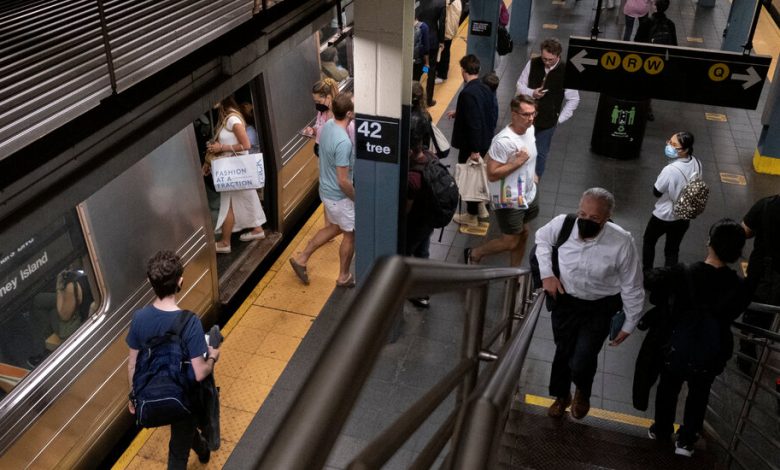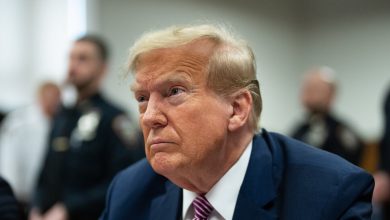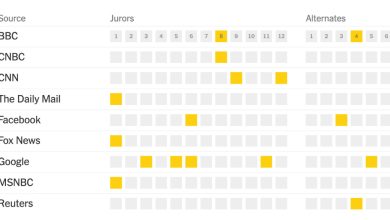Price of N.Y.C. Subway Ride Is Set to Go Up for the First Time in Years

Ever since the coronavirus pandemic decimated subway ridership in New York City, the Metropolitan Transportation Authority has resisted raising the price of a ride out of fear that even more people would abandon mass transit.
But after years of financial uncertainty, the authority now intends to balance its budget, and to do so, it wants to raise the base fare for subway and bus trips for the first time in eight years, to $2.90 from $2.75 by late August. On Wednesday, the M.T.A.’s board is widely expected to vote to approve the proposed fare increase.
The decision will almost certainly reverberate across the United States, where transit systems of every size have experienced steep and lingering losses as many white-collar commuters continue to work from home at least part of the time.
A May 2023 survey by the American Public Transportation Association found that larger cities have been hit especially hard — 71 percent of transit agencies with budgets greater than $200 million are predicting shortfalls in their operating budgets.
In New York, weekday ridership has rebounded significantly but still hovers at about 65 percent of prepandemic levels.
Lower-income workers who rely on the system to reach their jobs would bear the greatest burden of a fare increase, advocates said, especially as the cost of essentials such as housing, food and health care continues to rise.
Janno Lieber, the M.T.A. chairman, defended the expected increase in a June interview with WABC-TV, describing it as a return to biennial fare increases meant to keep up with inflation.
“New Yorkers understand that the cost of everything has gone up 6 percent, 7 percent,” Mr. Lieber said. “We have to give our work force appropriate raises. You know, that that’s part of the reality.”
The $2.75 base fare has been in place since 2015. The most recent fare increase came in 2019, when the price of unlimited weekly and monthly MetroCards rose.
According to the United Way of New York City, about half of working-age New Yorkers are struggling to cover basic needs this year, up from 36 percent of households in 2021.
Elizabeth Angeles, who helps oversee advocacy efforts for the organization, said that when people struggle to make ends meet, they tend to skip meals in order to pay for what are typically fixed costs, like transportation.
“Or, they’re relying on our emergency food pantries, which are already strapped,” Ms. Angeles said. “And so what it’s going to do is it’s going to exacerbate a system that is already on its knees.”
But the M.T.A. and even some of its regular critics said that a fare increase was a crucial step to ensure the survival of the transit system, which continues to rely heavily on rider payments.
Earlier this year, the authority had faced a budget gap of nearly $3 billion by 2025. A bailout from Gov. Kathy Hochul and lawmakers in Albany helped to significantly shore up the transit system’s finances by providing new and recurring funding for the authority, but not enough to avert a fare increase.
“The fare increases are going to ensure there is sufficient funding to keep transit going,” said Lisa Daglian, the executive director of the transit authority’s Permanent Citizens Advisory Committee, a watchdog group. “The budget would be balanced not only because of the incredible generosity of the governor and efficiencies by the M.T.A., but because riders are investing.”
The state’s funding package includes a $65 million payment earmarked to prevent a larger fare increase that would help make up for the one that was skipped in 2021.
Many in the city have urged Mayor Eric Adams to expand eligibility requirements for the Fair Fares program, which subsidizes public transit fares for New Yorkers whose income falls below the federal poverty line — about $30,000 a year for a family of four.
The M.T.A. had raised fares about 4 percent every two years since 2009, through a mix of increases to the base fare and to the price of MetroCards.
It has struggled financially since at least the 1970s, when a municipal fiscal crisis worsened problems caused by the system’s crumbling infrastructure.
Lawmakers moved in the 1980s to allow the authority to issue bonds, but its debt has exploded since then, and expenses have outpaced income.
The coronavirus crisis created new budget headaches when riders stopped using mass transit almost entirely, depleting critical fare revenue.



